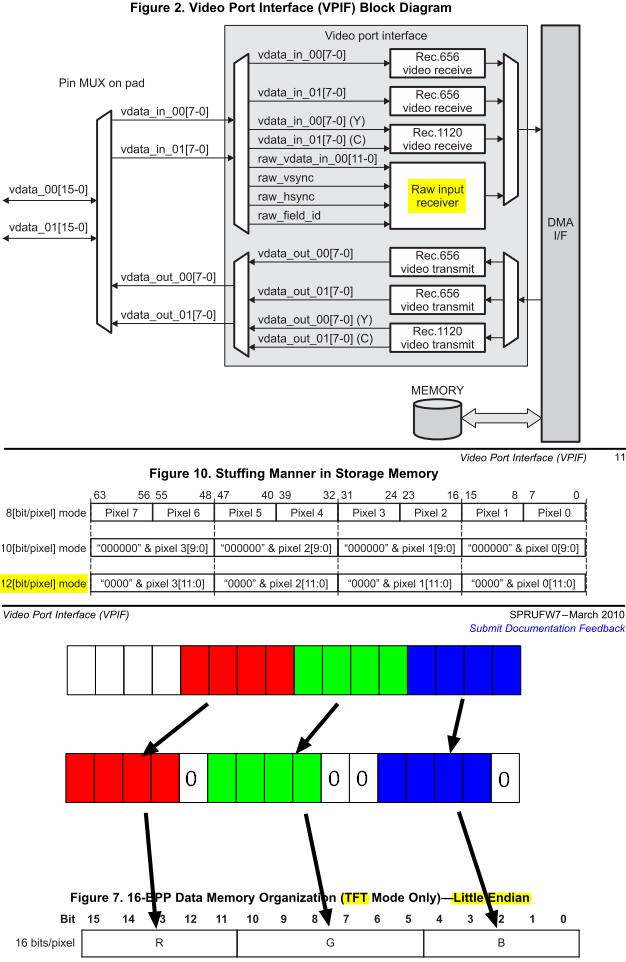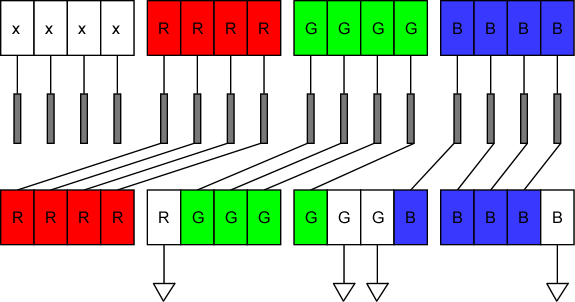Hi,
I would like to ask a question on AM1808 VPIF.

For 12-bit raw data input, the default memory storage format is shown in Fig.10. However,
1. If I am using TFT LCD, does the TFT mode of LCDC support 12-bit format?
2. If LCDC's TFT mode only supports 16-bit (video) format, then is it possible to convert the 12-bit data to RGB565 16-bit format, as shown in the picture below? Does AM1808 hardware support this padding and shifting process?
Zheng

